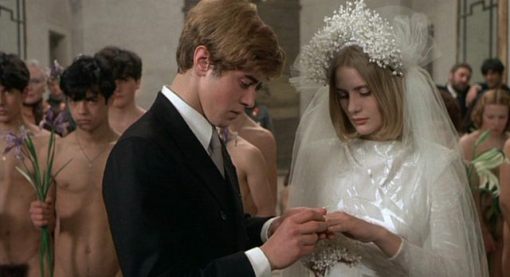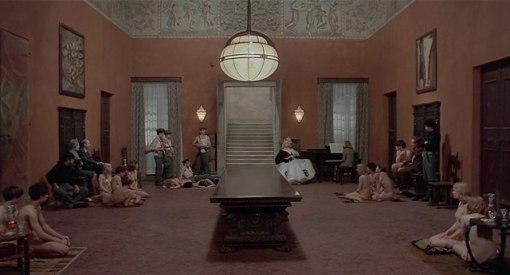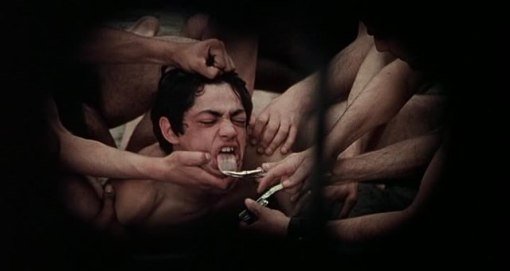In all honesty, it is difficult, if not impossible for a movie like Salo to live up to its reputation. Whether that is a good thing or a bad thing rests with the viewer alone, but having spent the past few months exploring Pasolini’s filmography, while intentionally saving this one for last, I made the simple mistake of getting my hopes up for this. That’s right, the movie that is so often billed as the most disgusting and vile endeavor in the history was beginning to sound enticing to me. Why? Well, Pasolini has become a favorite of mine in spite of the fact that I have yet to find that one film of his that encapsulates his best attributes as a filmmaker and balances them with something personal. Salo is a personal film, no doubt, but it’s far from being the definitive personal statement for Pasolini.
For whatever it is worth, Salo was never intended to be Pasolini’s last film. It seems that because of its reputation as being “nauseating” (and for the record, it certainly is) it has been misconstrued as being his ultimate statement, but he was already busy on his next project. Salo is ultimately an update of Marquis de Sade’s The 120 Days of Sodom, but the reorganization of the context is key: Salo, at its core, is a political film. Without getting into the details, it is easy to see the connection between the power held by the individuals in the movie and the Fascist power of Italy in the 1940s. In other words, Salo is not a subtle film at all.
Pasolini was never really recognized for his subtlety, though. While I held out hope for a film that contained all that I loved about Pasolini, I ended up with one that contained all that makes my cinematic ideology (so to speak) clash with his. Not only are we beaten over the head with the “abuse of power” angle, we’re practically lectured on it for the entire running time. Combine with what is physically being represented on screen, Salo should be anything but enjoyable but there’s still something in Pasolini’s photographing of the scenes that makes thing oddly poignant. The film’s final shot, for example, is extremely effective. After a endless barrage of violent acts (including eye-gouging and tongue-slicing) the camera refocuses to two guards, both still young boys who decide to dance together. It’s haunting when juxtaposed with the terrifying images that came before it, but it’s also kind of beautiful.
One element of Salo that is easy to overlook what with all the subversive vices and whatnot, is the fact that, along with Teorema, it is his most formally accomplished film. The camera keeps it’s distance and remains still almost always, which makes the horrifying circumstances even more palpable than if it was compiled in a more “spontaneous” manner – just compare with the Saw movies. It’s sort of like the Jean-Pierre Leaud story in Porcile taken to its technical extreme. It’s fascinating to watch, even when the actors are doing things that should evoke nothing but utter nausea. Salo isn’t really a masterpiece, it’s hard to watch and for some probably not worth the effort, but those who are fascinated by Pasolini the way I am, it is absolutely essential.




Leave a comment